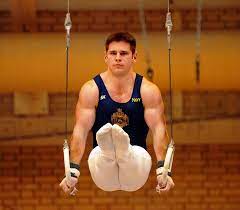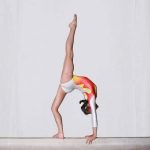Gymnastics is a sport that demands both strength and precision, involving short, intense routines that can last up to 90 seconds. This duration is quite brief compared to many other sports. Understanding whether gymnastics relies more on aerobic (endurance) or anaerobic (short bursts of energy) systems can help athletes improve their performance.
In this article, we will delve into whether gymnastics is primarily an aerobic or anaerobic activity.

Understanding Aerobic and Anaerobic Exercise
Before delving into the specific energy systems utilized during gymnastics, it is important to understand the difference between aerobic and anaerobic exercise. Aerobic exercise involves using oxygen to produce energy and is typically performed at a lower intensity over a longer duration. Examples of aerobic exercise include:
- Jogging
- Cycling
- Swimming
Anaerobic exercise, on the other hand, does not rely on oxygen and instead uses stored energy in the muscles to produce short bursts of high-intensity activity. Examples of anaerobic exercise include:
- Weightlifting
- Sprinting
- Jumping
Energy Systems Involved in Gymnastics
Gymnastics requires the utilization of both aerobic and anaerobic energy systems. The aerobic system is used during longer, less intense exercises such as endurance routines, while the anaerobic system is utilized during shorter, high-intensity exercises such as vaulting or tumbling passes. The three energy systems utilized during gymnastics are:
- The Phosphagen System: This system provides energy for short, explosive movements such as a vault or tumbling pass. It utilizes stored ATP (adenosine triphosphate) in the muscles and lasts for about 10 seconds.
- The Anaerobic Lactic System: This system provides energy for moderate to high-intensity exercises lasting 30 seconds to 2 minutes, such as floor routines. It utilizes stored glycogen in the muscles and produces lactic acid as a byproduct.
- The Aerobic System: This system provides energy for low to moderate-intensity exercises lasting longer than 2 minutes, such as endurance routines. It utilizes oxygen to break down glucose and fatty acids to produce energy.
Aerobic vs. Anaerobic Elements in Gymnastics
Gymnastics is a sport that mainly relies on the anaerobic energy system rather than the aerobic. Routines are generally between 90 to 120 seconds (floor, balance beam) and it’s rare to see a gymnast performing for longer than a 2 minute burst.
This is generally down to the intensity of the skills being performed and the difficulty in performing these skills for a prolonged period of time.
Some events are super quick such as Vault or Tumblers performing a tumbling pass. These will take 10 seconds or less and rely on the Phosphagen System. They are events which suit gymnasts with fast twitch muscle fibers and are comparable to the 100 meter sprinters.
Blink and you’ll miss it!

Examples of Aerobic and Anaerobic Gymnastics Exercises
Here are some examples of aerobic and anaerobic exercises in gymnastics:
- Aerobic exercises: endurance routines, such as Artistic floor routines or Team Gym Tumbling passes, which require sustained physical activity for a longer period of time.
- Anaerobic exercises: Men’s Artistic Pommel Horse and Parallel Bar Routines, which require shorter bursts of intense activity.
Benefits of Combining Aerobic and Anaerobic Exercise in Gymnastics
Incorporating both aerobic and anaerobic exercises in gymnastics training can have several benefits, including:
- Improved cardiovascular fitness: Aerobic exercises help improve cardiovascular health, increasing the efficiency of the heart and lungs. This can lead to improved endurance and recovery time during training and competition.
- Increased muscular strength and power: Anaerobic exercises help build strength and power in the muscles, which is essential for explosive movements such as vaulting or tumbling passes.
- Improved body composition: Combining aerobic and anaerobic exercises can help reduce body fat while increasing lean muscle mass, resulting in a more defined and toned physique.
- Enhanced mental focus and discipline: Gymnastics requires a high level of mental focus and discipline. Incorporating both aerobic and anaerobic exercises in training can help improve mental toughness and resilience, leading to improved performance in competition.

Training Methods to Optimize Aerobic and Anaerobic Fitness for Gymnastics
To optimize aerobic and anaerobic fitness for gymnastics, there are several training methods that can be utilized, such as:
- High-Intensity Interval Training (HIIT): This involves alternating short bursts of high-intensity exercise with periods of rest or low-intensity exercise. HIIT can help improve both aerobic and anaerobic fitness and is especially effective for improving endurance.
- Plyometric Training: This involves explosive exercises such as jumps, hops, and bounds. Plyometric training can help improve anaerobic fitness and muscular power.
- Circuit Training: This involves performing a series of exercises in a circuit, with little or no rest between exercises. Circuit training can be tailored to focus on either aerobic or anaerobic exercises, or a combination of both.
Tips to Improve Your Fitness for Gymnastics
Here are some tips to help improve your aerobic and anaerobic fitness for gymnastics:
- Incorporate both aerobic and anaerobic exercises in your training regimen.
- Gradually increase the intensity and duration of your exercises over time.
- Focus on proper form and technique to avoid injury.
- Incorporate stretching and flexibility exercises to improve mobility and reduce the risk of injury.
- Stay hydrated and fuel your body with nutritious foods to optimize performance.
Common Mistakes to Avoid When Training
Here are some common mistakes to avoid when training for aerobic and anaerobic fitness in gymnastics:
- Neglecting either aerobic or anaerobic exercises.
- Overtraining without allowing for proper rest and recovery time.
- Ignoring proper form and technique, which can lead to injury.
- Focusing solely on strength training without incorporating flexibility exercises.
- Failing to fuel your body properly with the necessary nutrients and hydration.
Potential Risks and Injuries
Like any sport, gymnastics carries the risk of injury, particularly when performing high-intensity exercises. Common injuries associated with aerobic and anaerobic gymnastics training include:
- Sprains and strains
- Fractures
- Dislocations
- Tendonitis
- Overuse injuries
It is important to always warm up properly before training and to seek medical attention if you experience any pain or discomfort during exercise.
Conclusion
In conclusion, gymnastics is a sport that requires a combination of both aerobic and anaerobic exercise. Understanding the energy systems involved in gymnastics and incorporating both aerobic and anaerobic exercises in your training regimen can help optimize performance and improve overall fitness. However, it is important to train safely and avoid common mistakes and injuries associated with high-intensity exercise.
Sources:
- Aerobic vs anaerobic exercise training effects on the cardiovascular system. Patel. H et al (2017)
- Medical News Today
FAQs
Is gymnastics better for aerobic or anaerobic exercise?
Gymnastics requires a combination of both aerobic and anaerobic exercise. Aerobic exercises such as running, swimming, or cycling can help improve cardiovascular endurance, while anaerobic exercises such as strength training and plyometrics can help build muscular power and explosiveness. Incorporating both types of exercise in your training regimen can help improve overall fitness and performance in gymnastics.
How often should I train aerobically and anaerobically for gymnastics?
The frequency and intensity of aerobic and anaerobic exercise will depend on your individual fitness level and training goals. It is generally recommended to incorporate both types of exercise into your training regimen, with a focus on gradual progression and proper rest and recovery time.
What are some good aerobic exercises for gymnasts?
Some good aerobic exercises for gymnasts include running, swimming, cycling, and jump rope. These exercises can help improve cardiovascular endurance and overall fitness, which can be beneficial for gymnastics performance.
What are some good anaerobic exercises for gymnasts?
Some good anaerobic exercises for gymnasts include strength training, plyometrics, and circuit training. These exercises can help improve muscular power and explosiveness, which are important for explosive movements such as vaulting or tumbling passes.
How can I reduce the risk of injury when training for aerobic and anaerobic fitness in gymnastics?
To reduce the risk of injury, it is important to warm up properly before exercise and to focus on proper form and technique during training. It is also important to incorporate flexibility exercises and to allow for proper rest and recovery time between training sessions. If you experience any pain or discomfort during exercise, seek medical attention to avoid further injury.
- How to Do a Back Handspring: Complete Step-by-Step GuideLearning how to do a back handspring is an exciting milestone for any gymnast. It builds confidence, agility, and forms the foundation for advanced tumbling… Read more: How to Do a Back Handspring: Complete Step-by-Step Guide
- How To Get Over a Mental Block In Gymnastics: A Complete GuideGymnastics is a sport that requires not only physical strength and skill but also mental strength. When a gymnast feels like they cannot attempt a… Read more: How To Get Over a Mental Block In Gymnastics: A Complete Guide
- The Best Leotard for Girls in 2025: What to Look ForFinding an ideal leotard for girls isn’t just about picking a dazzling design that sparkles (although it does help!). The leotard has to fit perfectly,… Read more: The Best Leotard for Girls in 2025: What to Look For
- The Best Gymnastics Shorts (Our Top Picks)The best gymnastics shorts are designed to be worn over the top of a leotard providing additional coverage around the upper legs, whilst allowing gymnasts… Read more: The Best Gymnastics Shorts (Our Top Picks)
- Decathlon Leotards – Are They Any Good?If you’re in the market for a new leotard, you may be wondering if Decathlon leotards are any good considering the low cost of their… Read more: Decathlon Leotards – Are They Any Good?
- A Complete Guide to Gymnastics Hand RipsAre you tired of dealing with painful gymnastics rips on your hands from training? Look no further – this article offers a comprehensive approach to… Read more: A Complete Guide to Gymnastics Hand Rips






